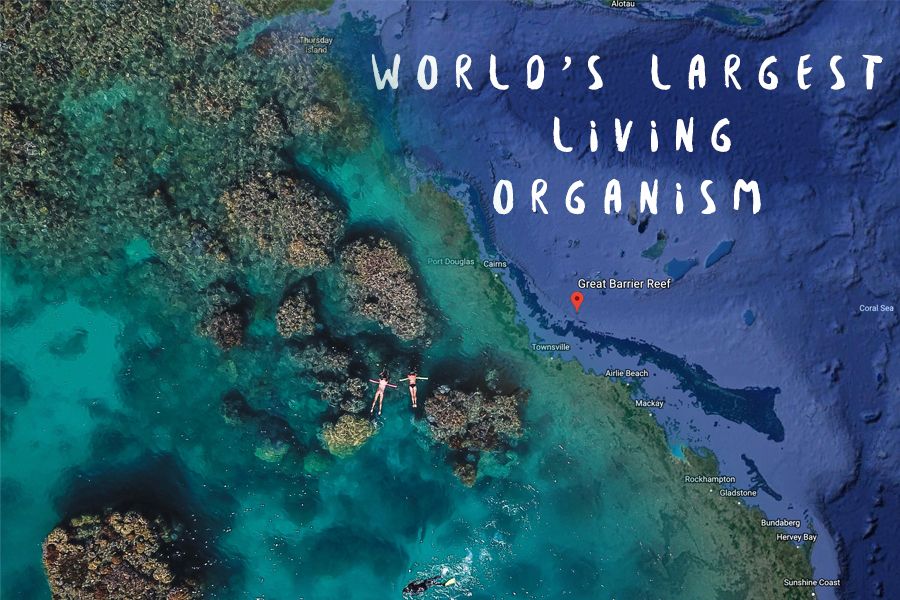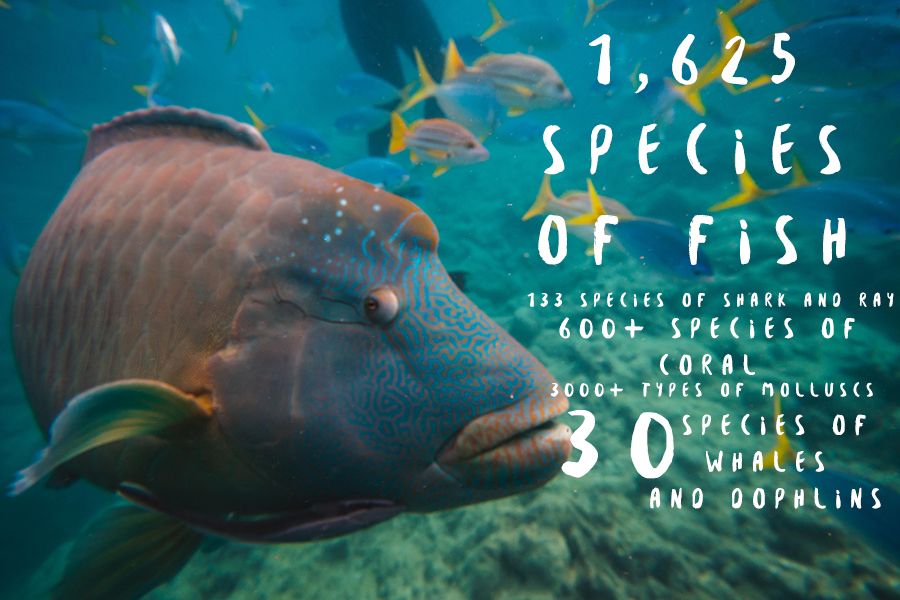The Great Barrier Reef
Introduction To The Reef
The Great Barrier Reef is the world’s largest living organism. The largest living thing of any plant or animal, the reef stretches over 2,300km across the ocean floor, leaching it’s way up to coasts and creeping far into the deep. As shallow on the ocean’s surface at some points and as deep as 2,000m at others, the Great Barrier Reef is one of the most beautiful, diverse and incredible environments in the world. For a list of the best ways to see the reef for yourself, Click Here.
It’s no surprise that the reef attracts millions of visitors a year, to snorkel, swim, scuba dive, explore and enjoy. Listed as Australia’s icon, the reef is a source of national pride and worldwide notoriety.

What Is The Reef Made Of
Contrary to popular belief, the reef is made up of much more than just coral beds, but vast landscapes of seagrass, coastlines, and sand beds, that work together to create what we know to be the Great Barrier Reef. Its diverse landscapes are home to thousands of sea creatures, plant life and coral families. According to the Great Barrier Reef Marine Park Authority, there are actually:
-
600 types of coral
-
100 jellyfish species
-
3000 types of molluscs
-
500 species of worms
-
1625 types of fish
-
133 shark and ray species
-
30 species of whales and dolphins
There are also 6 species of turtles who frequent the Great Barrier Reef, as well as over 200 species of resident birds and 17 species of water snakes. One of the most diverse environments on earth, it’s easy to understand why the Great Barrier Reef is listed as one of the natural wonders of the world.

Living inside the reef are 900 islands in the Great Barrier Reef that each have their own unique environment and ecosystems and are vital to the health of the Great Barrier Reef itself. Freshwater wetlands, estuaries, forests and shrublands on the islands all play their part in the bigger picture.
Threats To The Reef
Unfortunately, the reef is at risk due to factors such as climate change, warmer water temperatures, pollution and human interference. It’s our responsibility to take care of the reefs for future generations to enjoy and explore. Ensuring that we abide by all the rules of the park and take caution when using boats or equipment that can damage the reefs is an important part of that; what takes years to build takes only second to destroy. The smallest actions can have the biggest consequences, so taking care to leave the park how it is meant to be, is crucial to its survival.
Looking for ways to give back to the reef? Just follow this link.












